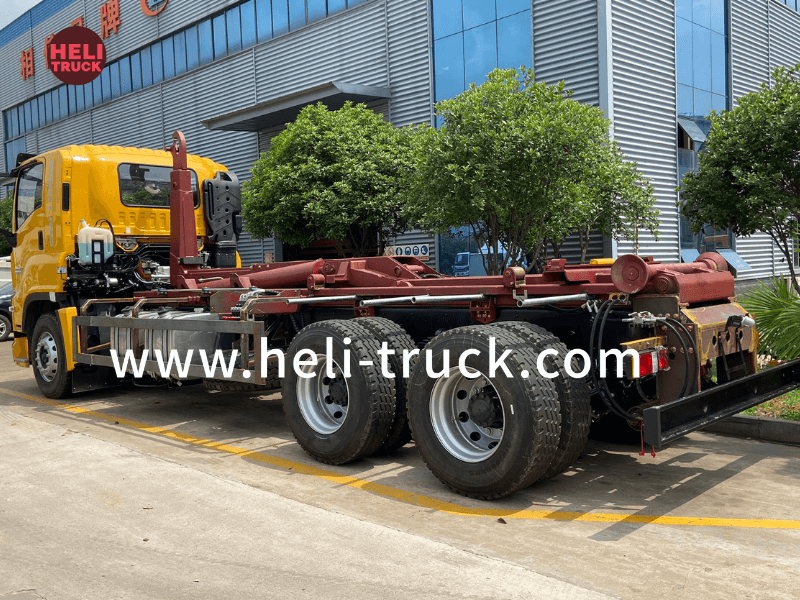Introduction
The garbage compactor truck industry plays a crucial role in waste management, ensuring the efficient collection and disposal of solid waste. These specialized vehicles are designed to compact and transport large volumes of waste materials, making them an essential component of municipal and commercial waste management systems. To ensure the safe and effective operation of garbage compactor trucks, industry standards and regulations have been established to govern the design, construction, operation, and maintenance of these vehicles. In this article, we will explore the key industry standards and regulations that govern the garbage compactor truck sector.
Overview of Garbage Compactor Trucks
Garbage compactor trucks, also known as waste compactors or refuse trucks, are specialized vehicles designed to collect, compact, and transport solid waste efficiently. These trucks are equipped with a hydraulic compaction mechanism that compresses the waste material, allowing for more waste to be transported in each load. Garbage compactor trucks come in various sizes and configurations, including rear-loading, front-loading, and side-loading models, to accommodate different types of waste collection needs.
Industry Standards for Garbage Compactor Trucks

The garbage compactor truck industry is governed by a set of standards and regulations that ensure the safety, reliability, and performance of these vehicles. These standards cover various aspects of garbage compactor trucks, including design specifications, construction materials, safety features, and operational requirements. Adhering to these industry standards is essential for manufacturers, operators, and maintenance personnel to ensure that garbage compactor trucks meet quality and safety requirements.
1. Design and Construction Standards
Industry standards for garbage compactor trucks specify the design and construction requirements that manufacturers must follow to ensure the structural integrity and operational efficiency of these vehicles. These standards cover aspects such as the size and capacity of the compaction body, the type of compaction mechanism used, the material and thickness of the compactor body, and the placement of safety features such as access ladders, handrails, and emergency stop buttons.
2. Safety Standards
Safety is a top priority in the garbage compactor truck industry, given the inherent risks associated with waste collection and disposal operations. Industry standards mandate the inclusion of various safety features in garbage compactor trucks to protect operators, maintenance personnel, and the general public. These safety features may include backup cameras, warning lights, audible alarms, fire suppression systems, and emergency shut-off devices to prevent accidents and injuries during operation.
3. Operational Standards
Garbage compactor trucks must adhere to operational standards that govern their use and maintenance to ensure optimal performance and longevity. These standards may include guidelines for loading and unloading waste materials, proper compaction techniques, routine maintenance schedules, and procedures for troubleshooting common issues. By following these operational standards, operators can maximize the efficiency of garbage compactor trucks while minimizing downtime and repair costs.
Regulatory Compliance and Certification
In addition to industry standards, garbage compactor truck manufacturers and operators must also comply with regulatory requirements set forth by government agencies at the local, state, and federal levels. These regulations cover a wide range of issues, including vehicle emissions, transportation permits, driver licensing, and environmental impact assessments. Water tank truck maintenance must obtain certification from regulatory bodies to demonstrate compliance with these requirements before their garbage compactor trucks can be sold or operated in the market.
Challenges and Future Trends
The garbage compactor truck industry faces several challenges and opportunities as it continues to evolve in response to changing waste management needs and technological advancements. One of the key challenges is the increasing demand for sustainable waste management solutions that prioritize recycling, composting, and waste reduction over traditional landfill disposal. Garbage compactor truck manufacturers are exploring innovative technologies such as electric-powered vehicles, automated collection systems, and sensor-based monitoring to improve the efficiency and environmental sustainability of waste collection operations.
Conclusion
Industry standards and regulations play a vital role in ensuring the safe and efficient operation of garbage compactor trucks in the waste management sector. By adhering to these standards, manufacturers, operators, and maintenance personnel can uphold the quality, reliability, and performance of garbage compactor trucks while minimizing risks and environmental impacts. As the garbage compactor truck industry continues to evolve, staying informed about the latest industry standards and regulatory requirements will be essential for stakeholders to meet the changing demands of the waste management industry.
